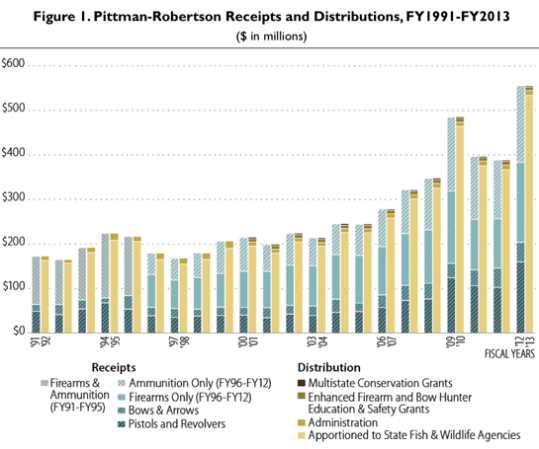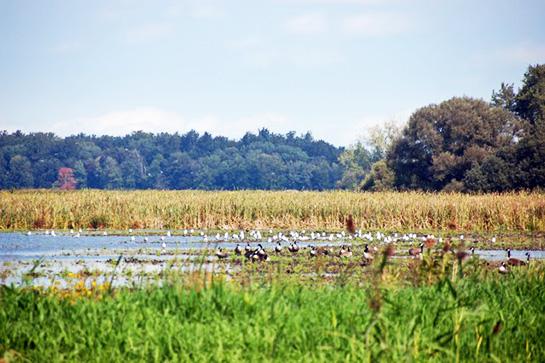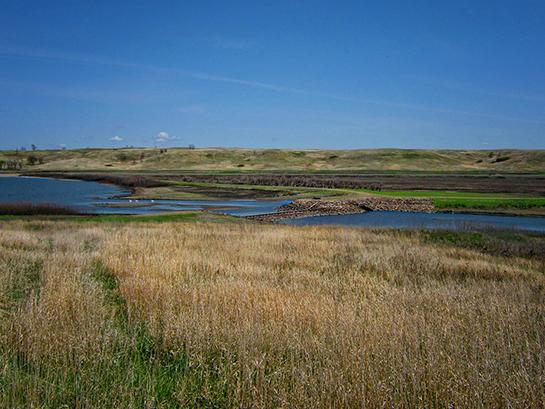Barring a last-minute agreement, $85 billion in across-the-board spending cuts will be automatically “sequestered” from the federal 2013 fiscal year budget on March 1. Over the next decade, $1.2 trillion in federal spending–an average of $109 billion annually–will be trimmed in similar “sequestrations.”
If the budget cuts go into effect, on March 1 all federal agencies must comply with a directive to cut “all non-exempt nondefense discretionary funding” by a uniform 8.2 percent, meaning it will affect nearly every function of wildlife and public lands management, including greater risk of wildfires, less poaching enforcement, slower gun background checks and drastically reduced capacity to enforce environmental regulations.
More than $685 million in 2013 federal allocations designated for wildlife management and public lands access will be “sequestered,” or withheld from distribution, if the budget cuts are enacted.
“These cuts will have a dramatic impact on conservation programs cherished by America’s hunters and anglers as well as all those who enjoy access to our rich natural resources,” the National Wildlife Federation warns. “At stake are the decades of progress our country has made to preserve the health and safety of our water, air, land, and environment and to create the clean energy jobs vital to the future of our economy.”
According to the National Resources Defense Council, if the cuts are enacted, outdoorsmen will see trail closures, poor maintenance of forest roads, unprocessed recreational permits, shortened seasons, shuttered campgrounds and off-limits recreational areas in 398 national parks, on more than 193 million acres of national forest land, and on more than 260 other federal public land areas.
Among potential casualties: The National Wildlife Refuge System could lose 200 jobs and see its law enforcement budget cut by 15 percent. As a result, Interior Secretary Ken Salazar warns that 128 of the nation’s 561 wildlife refuges would need to be closed.
Below is a brief outline of the $685 million to be cut from federal wildlife and public lands management programs:
WILDLIFE
– Federal Aid in Wildlife Restoration program (Pittman-Robinson Act), which provides federal funds to states for wildlife management and restoration, would be cut by $31 million; the Sportfish Recreation program would be cut by $34 million; and the Boating Safety Trust Fund cut by $9 million.
– All three of these funds are raised through excise taxes on hunting, fishing, and boating equipment and fuel do not go into the general treasury. While the U.S. Fish & Wildlife Service (FWS) collects these taxes from manufacturers, they are required by law to distribute them to the states for wildlife and habitat management.
– The U.S. Fish & Wildlife Service: The service, which provides hunting and fishing opportunities by financing wildlife and habitat enhancement and managing national wildlife refuges, will see its 2013 budget cut by $105 million. This money will come from law enforcement, refuge maintenance, habitat conservation, and national fish-hatchery operations.
– Grant programs: The State and Tribal Wildlife Grants program, which provides funding to prevent wildlife from becoming endangered, will be cut by about $5 million.
PUBLIC LANDS
– National parks: The National Park Service will have to trim $218 million from its 2013 budget, according to the Office of Management and Budget. This money will come from the service’s operations budget, which funds protection of resources, law enforcement and park rangers, visitor services like education and interpretation, and maintenance such as trail construction and campgrounds in 398 national parks.
“Park ranger jobs would be on the chopping block,” writes Russell McLendon of the Mother Nature Network on Forbes.com, noting the Natural Resources Defense Council warns “monitoring of endangered species and other scientific work would likely be delayed or dropped.”
– Wildlife Refuges: The National Wildlife Refuge System could lose 200 jobs and see its law enforcement budget cut by 15 percent. As a result, Interior Secretary Ken Salazar warns that 128 of the nation’s 561 wildlife refuges would need to be closed.
– National forests: The Forest Service’s 2013 budget could be cut by $175 million, impairing access to recreational opportunities and management of natural resources on the 193 million acres it manages.
According to the OMB, the service’s operations budget would be slashed by $129 million, trimming money for forest restoration and habitat management. The service’s “Forest and Rangeland Research” budget would be cut by $24 million, and its “State and Private Forestry” account, which provides funds for open space conservation and new protected areas, would be cut by $21 million.
– Public lands: The Bureau of Land Management, which manages 256 million acres of public lands mostly open to sportsmen, will see its 2013 budget cut by $85 million. Most of the money will come from the agency’s operations budget, which includes nearly all of its funds to manage wildlife and fisheries, wilderness, and other recreation resources.
– Conservation lands: The Land and Water Conservation Fund, which has provided funding for countless National Parks, wildlife refuges, and other public lands, will be cut by about $20 million, almost certainly delaying or halting crucial conservation projects.
– Wetlands restoration: The North American Wetlands Conservation Fund, which provides federal grants to restore wetlands for fish and wildlife, would be cut by $3 million.
WHY IT DOESN’T MAKE SENSE
The Natural Resource Defense Council maintains that further slashing already stressed conservation budgets doesn’t make economic sense. The NRDC maintains that just 1.4 percent of all federal spending is dedicated to wildlife and land-use management and conservation. The National Park Service’s budget is 1/14th of 1 percent of the national budget, while all federal expenditures that relate to oceans and coasts make up less than 0.5 percent, the NRDC says.
The National Wildlife Federation notes the sequester will be just the latest in a series of budget cuts, noting conservation programs were trimmed by more than 30 percent in the 2012 budget, even though “in 2011 alone, 90 million Americans (38 percent of the U.S. population age 16 and older) spent $145 billion — 1 percent of GDP — on wildlife-related recreation.”
According to the NRDC, more than 300 million people visit U.S. national parks every year, supporting 258,000 jobs and $31 billion in economic activity. Also, the NRDC says, another 45 million people visit national wildlife refuges, generating $4.2 billion and sustaining 35,000 jobs.
“There is little doubt that cuts would impact the hunting and fishing experience that Americans currently enjoy,” write Jessica Goad, Michael Conathan, and Christy Goldfuss on americanprogress.org. “And cuts of this magnitude could potentially lead to a decline in the quality of wildlife habitat, fewer places that are protected for their hunting and fishing values, less law enforcement, poorly maintained hiking trails, deterioration of visitor facilities, fewer education programs, unprocessed hunting and access permits, and the basic disintegration of visitor experiences overall — all of which means less revenue.”
For more, go to:
— The Fiscal Cliff And The Environment
— Conservation Impacts of the Fiscal Cliff
— 7 Ways that Looming Budget Cuts to Public Lands and Oceans Will Affect All Americans






